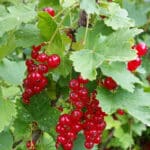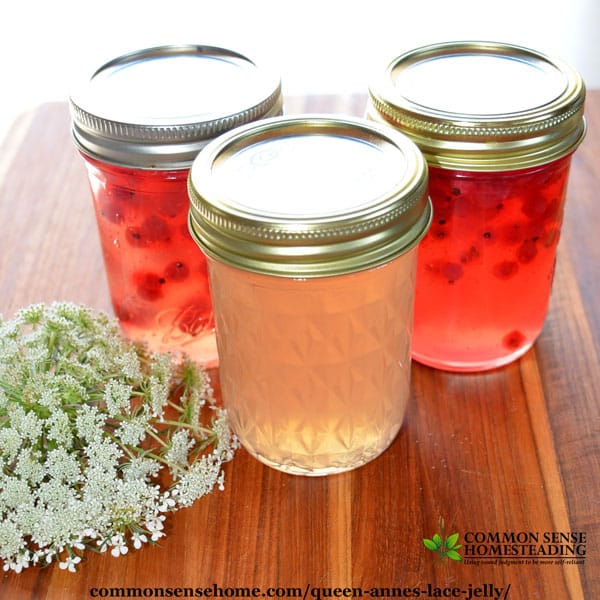Currants – Growing, Harvesting, and Uses
This post may contain affiliate links. Read my full disclosure here.
Currants are a great plant for edible landscapes. Their bright berries are high in vitamin C, and they tolerate light shade. We’ll share how to grow them, when to harvest, and how to use them.
Growing currants and gooseberries is banned in some parts of the United States due to concerns about white pine blister rust. New Hampshire, North Carolina and West Virginia do not allow them at all. Some states allow them with permits. Check for restrictions in your area.
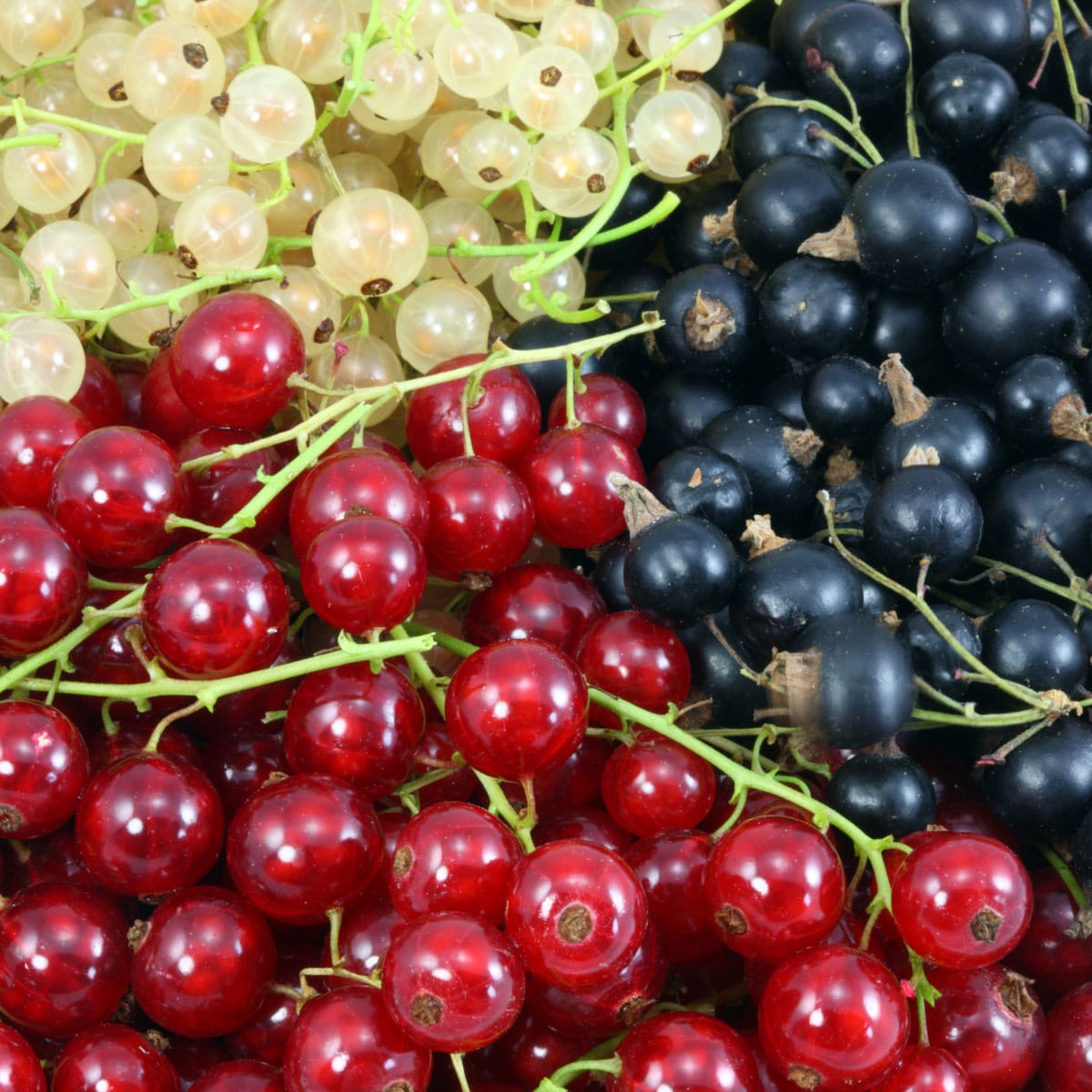
Varieties of Currants
The name “currant” is used for two different types of fruit. Zante currants are a type of small, seedless grape. They’re also known as Corinth raisins, Corinthian raisins, or Corinth grapes. When you see a package of dried currants, it’s usually these raisins.
This article is about shrubs in the genus ribes, which are related to gooseberries. There are four main types: black, red, white, and clove.
Black currants (Ribes nigrum): Black currants have a deep, rich flavor that is often described as tart and slightly sweet. They are commonly used in jams, jellies, and syrups, and can also be cooked into savory sauces or used in baked goods.
Red currants (Ribes rubrum): Red currants are slightly less tart than the blacks, and have a bright, tangy flavor that pairs well with sweet desserts and baked goods. They are often used in jams and jellies, and can also be used as a garnish for cocktails or fruit platters.
White currants (Ribes rubrum alba cv.): White currants have a milder flavor than red or black currants and are often used in sweet desserts or fruit salads. They have a delicate, slightly sweet taste that pairs well with other fruits like strawberries or peaches.

Clove currant (Ribes aureum or Ribes odoratum ): These plants have clove-scented, trumpet-shaped golden yellow flowers. The grape sized black berries are tart with a hint of clove flavor. It is a dioecious species, with male and female plants. You need a male and female to get fruit.
Growing Currants
Currants are a thornless bush that grows in USDA hardiness zones 3-8. They tolerate some shade, and are self-fertile (except for Ribes aureum). Planting several varieties may increase yield.
Plant currants in well-drained soil rich in organic matter. They prefer a slightly acidic soil pH (around 6.0 to 6.5). Plant in the spring or fall, and space about 4-6 feet apart.
Ribes rubrum varieties are around 3-5 feet tall, while Ribes nigrum reaches 5-6 feet. Ribes aureum varieties are the largest, reaching 6-8 feet in height and width.
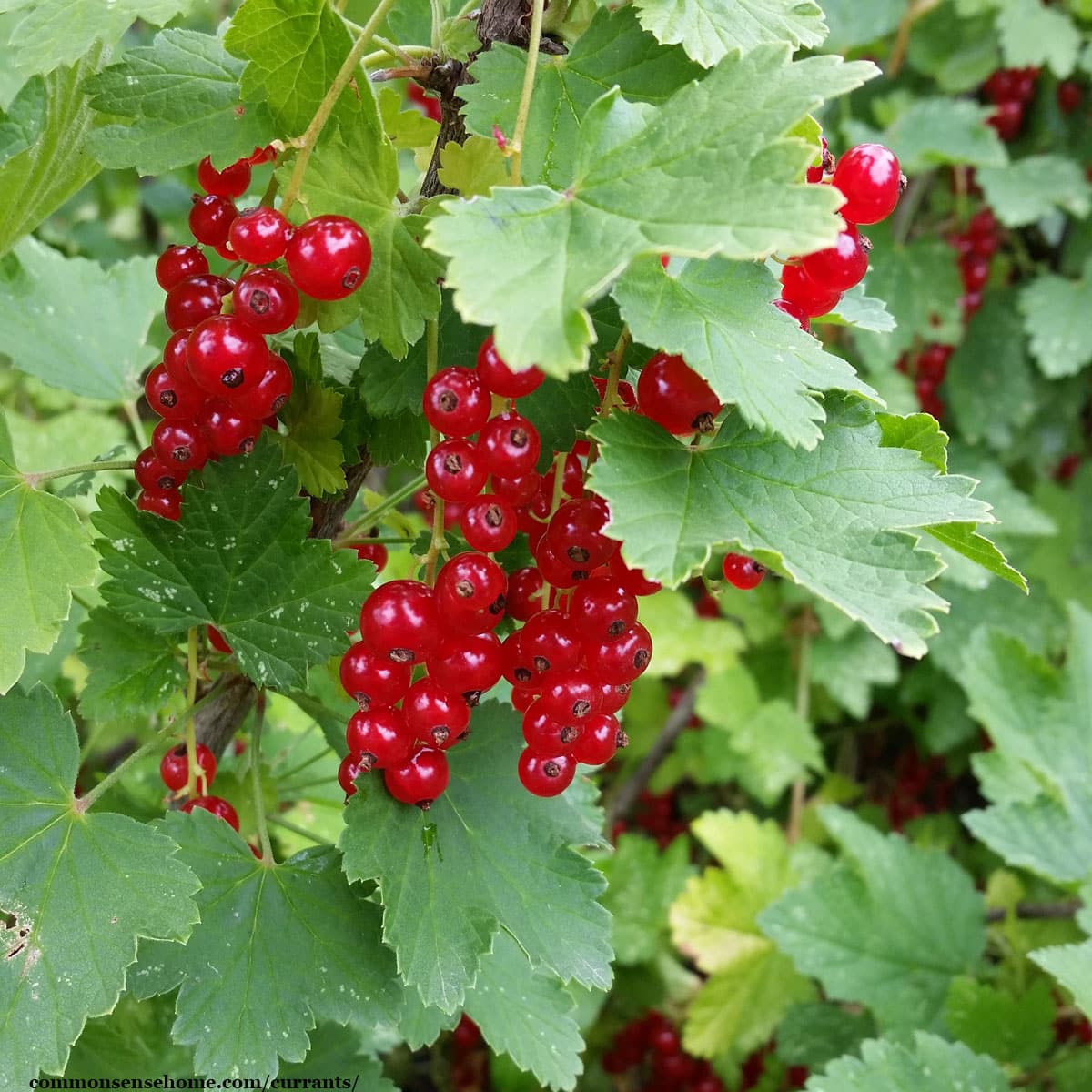
My grandmother had a single red currant bush near her apple trees. We have several bushes that the neighbors wanted to relocate. We transplanted them into our west orchard. Right now they are in full sun, but as the trees mature they will be in partial shade.
These shrubs can live a VERY long time with very little care. Ours were at the neighbor’s place for decades, and grandma’s bush is still alive at the old homestead.
Care
Sunlight: The plants tolerate some shade, especially in hot climates. We helped harvest berries at another old homestead here in Wisconsin, and the plants produced fairly well in partial shade.
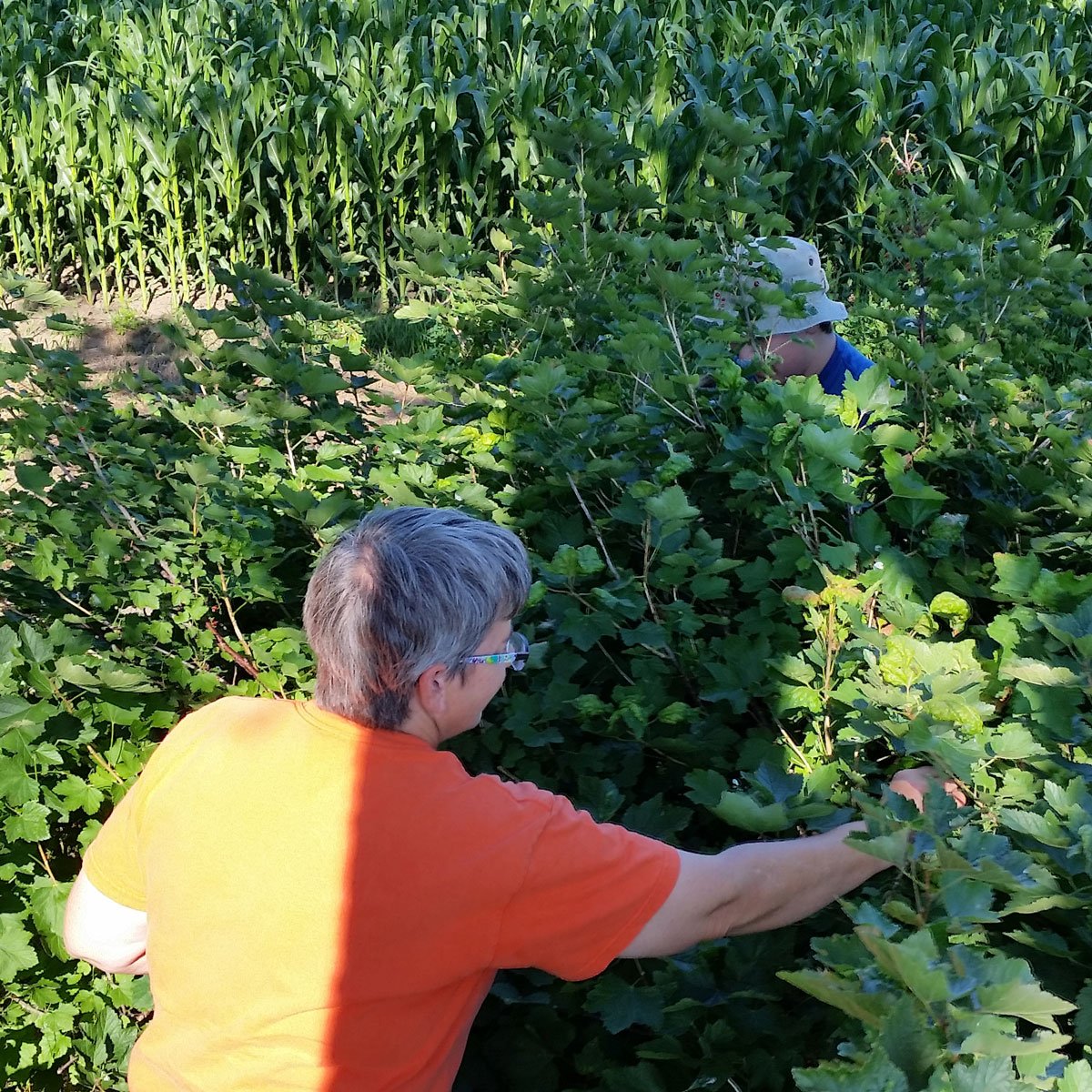
Watering: Currants do best with regular watering, especially during hot and dry periods. Water deeply once a week, making sure to soak the entire root zone. Once well-established, they tolerate dry conditions, but the fruit is smaller.
Mulching: Use organic mulches like straw, leaves, and wood chips to conserve moisture and block weeds. The plants have shallow roots, so mulch really helps them to thrive.
Fertilizing: Pull back the mulch in early spring and top dress with compost or aged manure. Remove any emerging weeds and dress with a fresh layer of mulch.
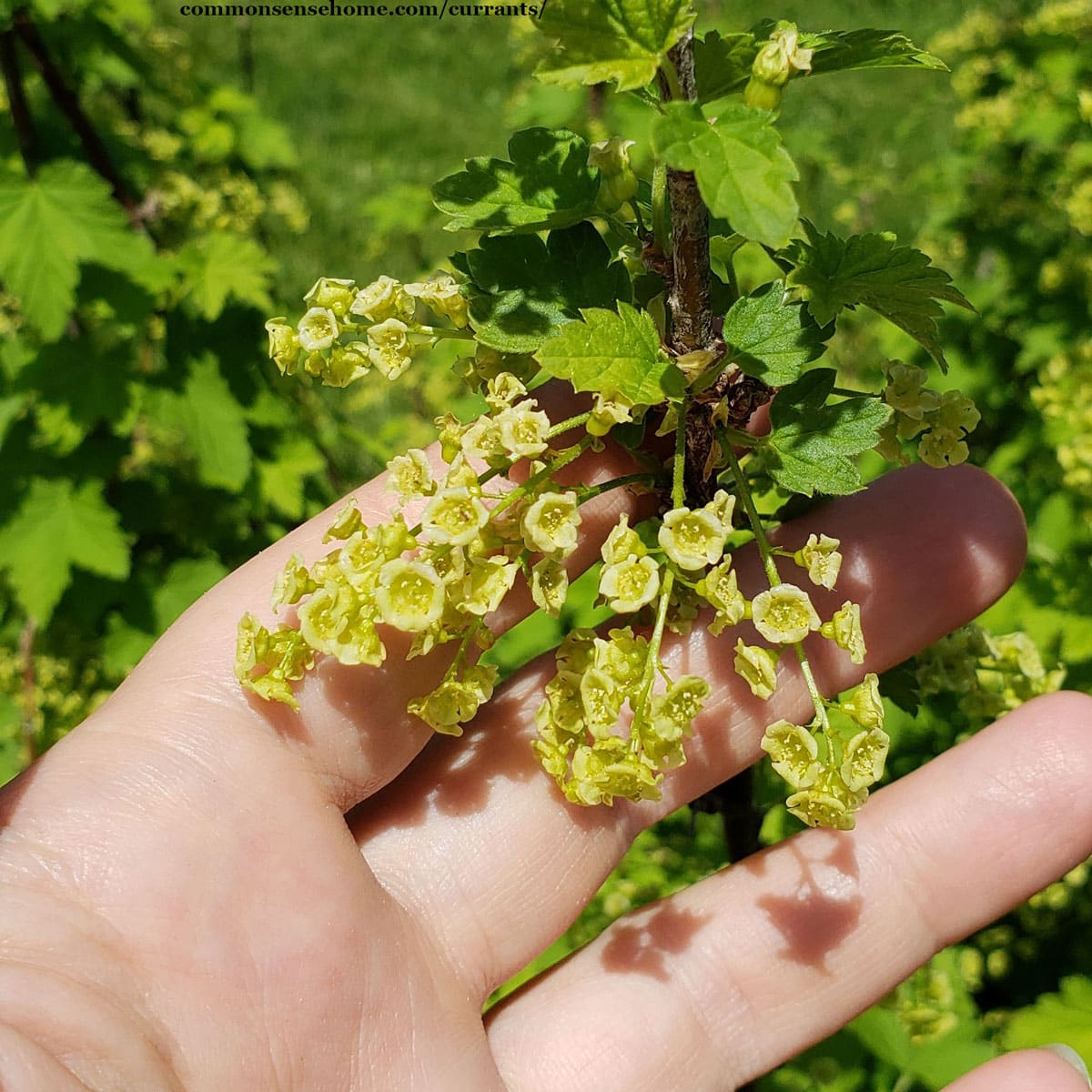
Flowering: The blooms typically occur in mid-spring (May for us). Most Ribes species produce thick clusters of small, inconspicuous green or yellow flowers. These are great for bees, especially the Ribes aureum varieties, which have larger, brighter blooms.
Pruning
Prune currants annually in late winter/early spring to promote healthy growth and fruit production. Crowded stems make picking difficult, so make sure open up the plant. The plant may also be more prone to disease.
Remove any dead or diseased wood, as well as crossing or rubbing branches. Red currant like to sprawl, so clip off stems laying on the ground to make picking easier. (Alternatively, you can bury part of those stems so they root and use the cutting to start a new plant.)
In the video below, I share how I cleaned up the old bushes from our neighbor’s place. (Make sure ad blockers are off so video displays properly.)
Black currants bear most heavily on one year old stems, while reds produce most heavily on 2 to 3 year old stems.
Propagating Currants
Propagate currants through cutting or layering. They will also spread through suckers.
Would you like to save this?
For cuttings, take a cutting from a healthy branch in the early spring. Dip the cut end in rooting hormone, and plant it in a pot or directly in the ground.
To propagate through layering, bend a flexible branch down to the ground and cover it with soil, leaving the tip of the branch above ground. Over time, the buried portion of the branch should take root and grow into a new plant.
Once the new plant is established, cut it free from the parent plant and transplant it to its new location.
Pests and Diseases
Like any plant, currants can be susceptible to pests and diseases. Aphids, powdery mildew and rust are some of the most common.
Pests and diseases are a sign of nutrient deficiency and/or stress. Make sure your plants have good air circulation, adequate moisture, and mulch. To bump up nutrient availability, add a dusting of gypsum with your spring compost.
Harvesting Currants
Currants are ready to harvest when the fruit detaches easily from the stem. We pick our red currants in clusters, like grapes, leaving the small green stems attached. The stems are high in pectin, which is great for making jelly. Our neighbor likes to use a pair of garden sheers to clip off the berry clusters.

Store the fresh berries in the refrigerator and use them within a week or two for best quality. In dry conditions, they’ll keep better. If it’s been raining heavily, it’s best to use them within 2-3 days. Don’t rinse the fruit until you are ready to use it.
Storage
For longer storage, try freezing, canning, or dehydrating.
To freeze whole currants, simply rinse them, remove the stems, and spread them out in a single layer on a baking sheet. Place the baking sheet in the freezer until the fruit is frozen solid, then transfer them to a freezer-safe container.
To freeze currant puree, rinse the berries and blend them in a food processor until smooth. Pour the puree into ice cube trays and freeze until solid, then transfer the cubes to a freezer-safe container.
Since they are acidic, you can preserve currants with a water bath canner. We have a few of different canning recipes on the website, including:
- Old Fashioned Currant Jelly with No Added Pectin (make sure to save the stems when picking)
- Low Sugar Apply Currant Spread
- Queen Anne’s Lace Jelly with Currants – this jelly showcases whole currants suspended in a clear base (pictured below)
Red currants do not dehydrate very well, because the fruit is small and the skin is not porous. The seeds make the dried fruit quite chewy. I smashed my berries slightly to help them dry.

Black currants work a little better, but it helps to cook them in boiling water for 2 minutes before drying to split the skins.
Spread the fruit out in a single layer on the dehydrator trays. Dry at 135°F until the currants are shriveled and dry to the touch, 12-24 hours, depending on humidity levels. The fruit will resemble raisins, but will be more leathery.
Red more about testing dryness and storage of dehydrated produce here.
Uses
The berries are high in antioxidants and vitamin C, which can help boost the immune system and promote overall health. They also contain anti-inflammatory compounds that may help reduce inflammation in the body.
The fruit can be eaten fresh or cooked. Some ways to use currants in the kitchen include:
- Jams and Jellies
- Baked Goods, including muffins, scones, and cakes.
- Sauces and Marinades – they pair well with meats like pork or chicken.
- Cocktails – add muddled berries to cocktails for a burst of flavor and color.
- Fresh fruit Salads
- Homemade wine
You may want to try these scones made with fresh currants.

Don’t Let Dogs or Cats Eat Currants
If you have one of those pets that eats everything, keep them away from your patch. Currants contain a substance called persin, which can cause digestive upset, vomiting, and diarrhea in some pets.
Additionally, the seeds and stems of the plant can be a choking hazard for pets, and can cause blockages in the digestive tract if ingested.
Learn More
We have dozens of gardening articles on the site, covering everything from soil prep to harvest. See the gardening articles here.

This article is written by Laurie Neverman. Laurie and her family have 35 acres in northeast Wisconsin where they grow dozens of varieties of fruiting trees, shrubs, brambles, and vines, along with an extensive annual garden. Along with her passion for growing nutrient dense food, she also enjoys ancient history, adorable ducks, and lifelong learning.

